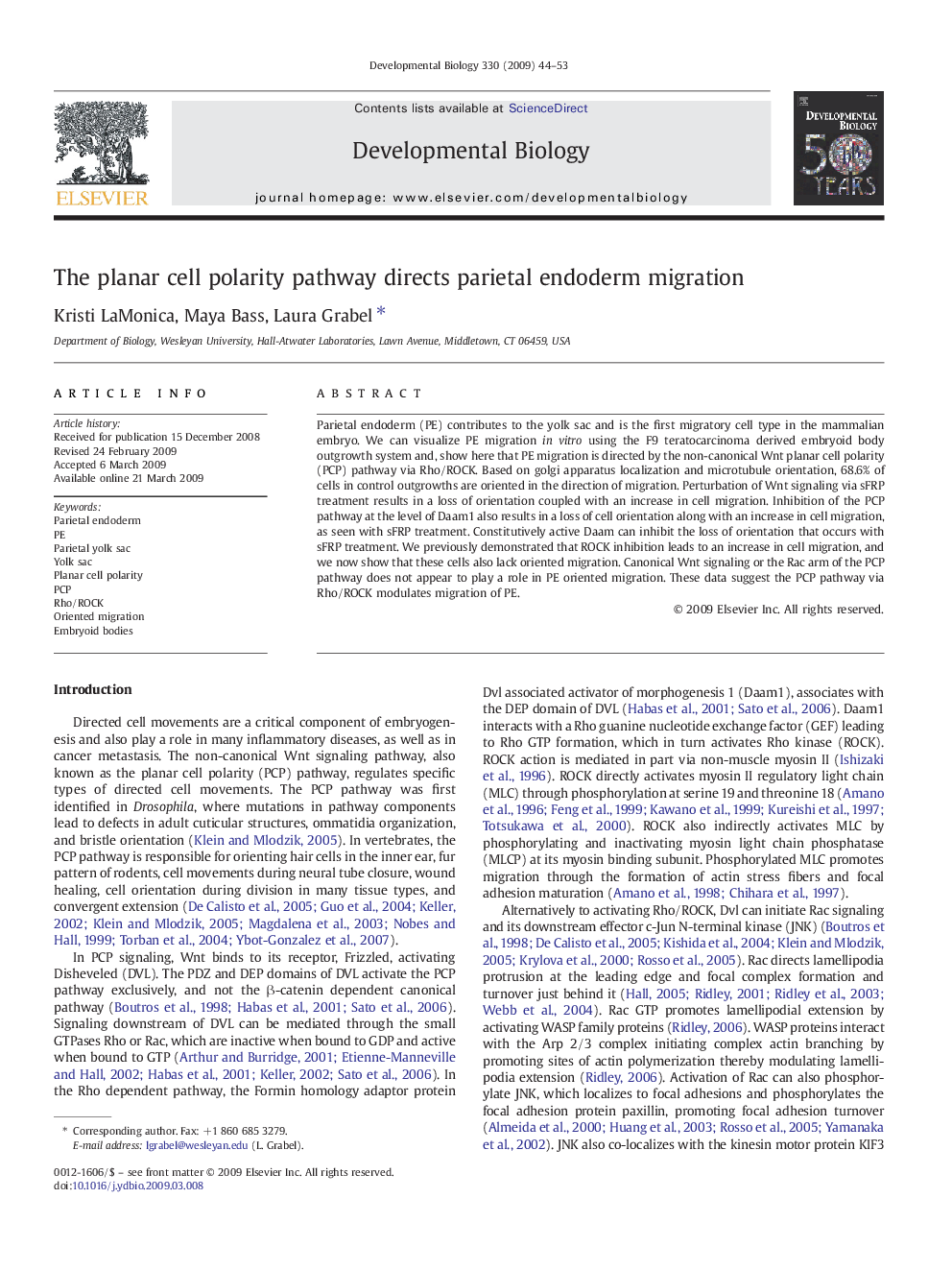| Article ID | Journal | Published Year | Pages | File Type |
|---|---|---|---|---|
| 10933296 | Developmental Biology | 2009 | 10 Pages |
Abstract
Parietal endoderm (PE) contributes to the yolk sac and is the first migratory cell type in the mammalian embryo. We can visualize PE migration in vitro using the F9 teratocarcinoma derived embryoid body outgrowth system and, show here that PE migration is directed by the non-canonical Wnt planar cell polarity (PCP) pathway via Rho/ROCK. Based on golgi apparatus localization and microtubule orientation, 68.6% of cells in control outgrowths are oriented in the direction of migration. Perturbation of Wnt signaling via sFRP treatment results in a loss of orientation coupled with an increase in cell migration. Inhibition of the PCP pathway at the level of Daam1 also results in a loss of cell orientation along with an increase in cell migration, as seen with sFRP treatment. Constitutively active Daam can inhibit the loss of orientation that occurs with sFRP treatment. We previously demonstrated that ROCK inhibition leads to an increase in cell migration, and we now show that these cells also lack oriented migration. Canonical Wnt signaling or the Rac arm of the PCP pathway does not appear to play a role in PE oriented migration. These data suggest the PCP pathway via Rho/ROCK modulates migration of PE.
Related Topics
Life Sciences
Biochemistry, Genetics and Molecular Biology
Cell Biology
Authors
Kristi LaMonica, Maya Bass, Laura Grabel,
